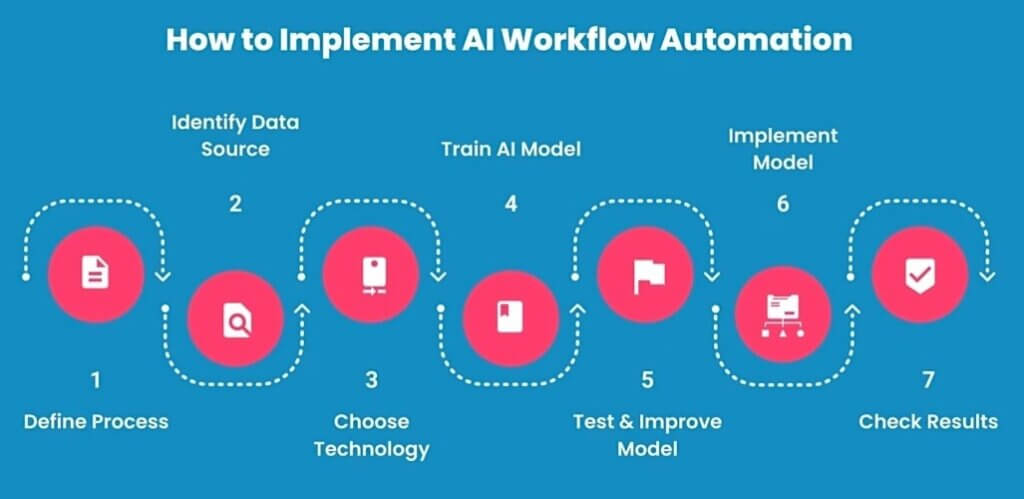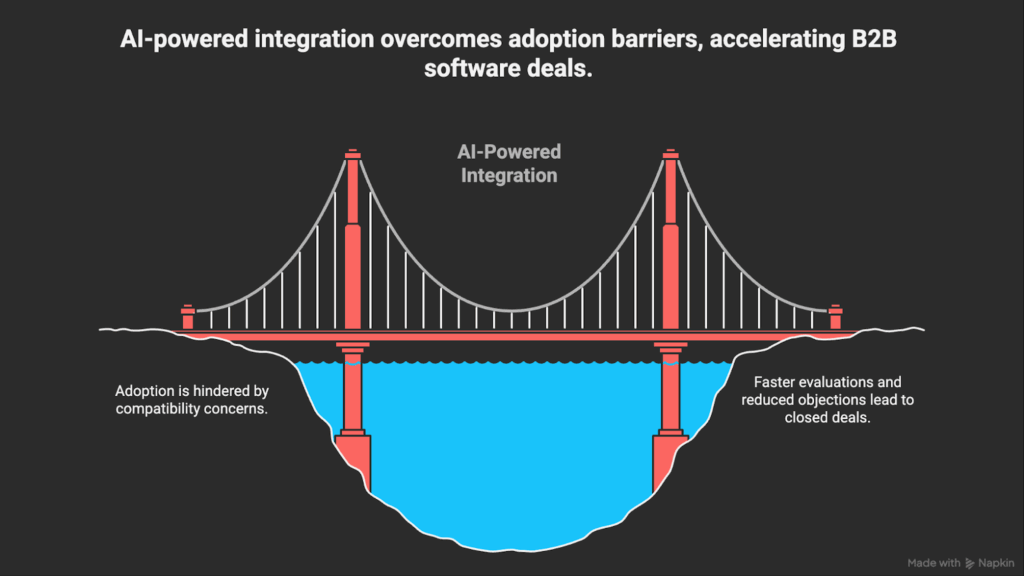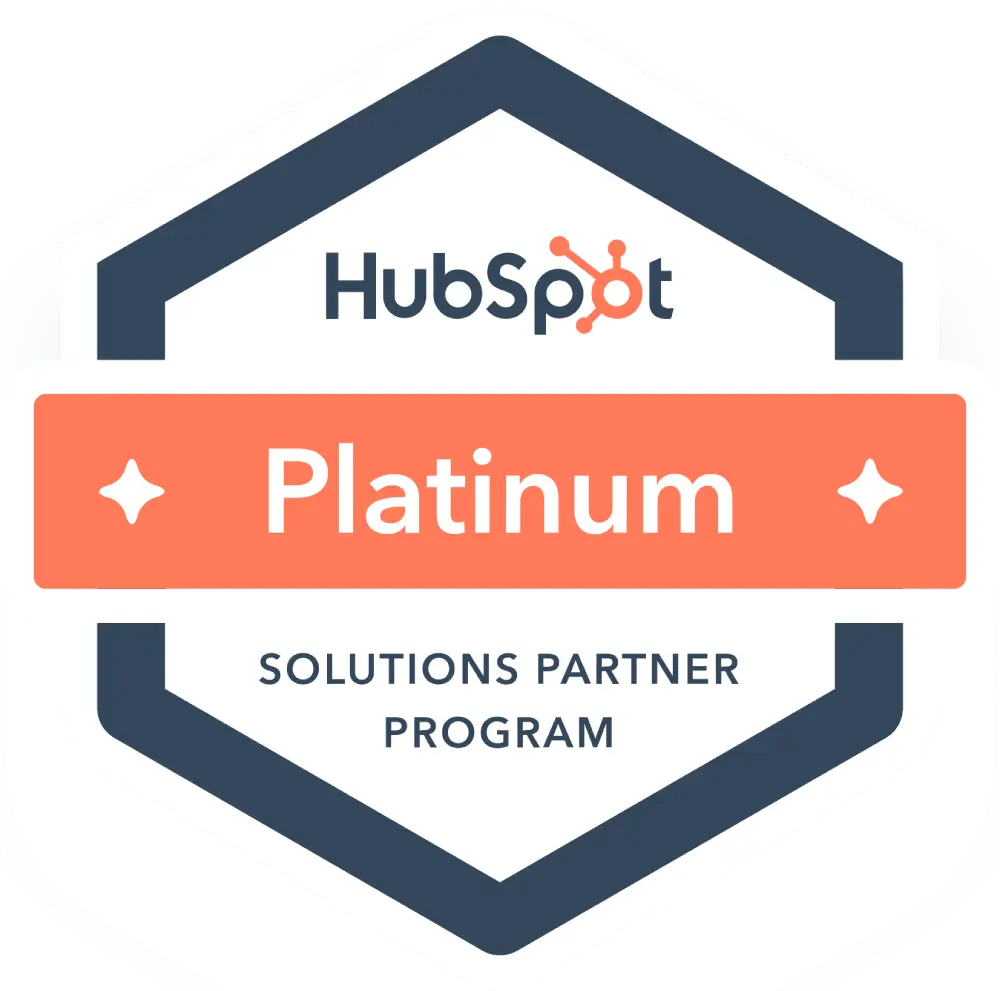Acquiring new B2B customers is getting demonstrably harder for startups and scale-ups. Why? For one, the average B2B buying group now involves 6 to 10 decision-makers, each armed with their own research. This drags out deal cycles in a marketplace where the cost to win each new customer continues to rise.
Another reason is that critical buying signals are often scattered across siloed systems, which prevents teams from seeing when an account is ready to buy. On top of that, legacy tactics like broad outbound campaigns aren’t producing like they used to, mostly just due to prospect fatigue, leaving many businesses wondering where their next customer is coming from.
Fortunately, artificial intelligence (AI) is changing this dynamic by transforming how companies identify, engage, and convert new customers. AI connects data across marketing, sales, and product tools into a single view of the account and automates repetitive tasks so your sales teams can act faster. More importantly, the combination of predictive AI for analysis and generative AI for content makes personalization at scale a reality. Companies leveraging AI-powered personalization are seeing a 10-15% increase in revenue and significantly higher customer acquisition efficiency.
For B2B startups and tech companies, adopting AI-driven customer acquisition strategies is essential to compete and succeed in the marketplace. These approaches help prove value earlier and sustain sales momentum throughout the cycle. Here are eight essential B2B customer acquisition strategies to employ in our brave, new AI world.
How AI Has Changed B2B Customer Acquisition Strategies
The traditional B2B customer acquisition model was built on a foundation of disconnected activities. It often relied on siloed data from CRMs and marketing platforms that led to manual lead scoring and broad, impersonal outbound campaigns. The result was a process plagued by inefficiencies, including valuable sales time wasted on accounts that were a poor fit, and pipelines that were impossible to predict with any confidence.
AI and machine learning solutions rewrite this outdated playbook by acting as a central intelligence layer:
- It starts by integrating the fragmented data from your CRM, marketing tools, and product usage logs into a single, unified account view.
- With a complete picture generated, predictive models then analyze thousands of behavioral signals, including crucial third-party intent data, in real-time to identify the specific accounts that are ready to engage.
- Engagement then shifts from generic campaigns to hyper-personalized messaging and demos designed for a prospect’s unique industry, role, and stage in the buying journey.
The transition from reactive to data-driven B2B customer acquisition strategies has a profound effect. Repetitive, low-value work like account research, data enrichment, and scheduling follow-ups gets automated, which frees your team to focus on building relationships and higher-value activities. Your acquisition process becomes proactive, precise, scalable, and, most importantly, predictable.

Benefits of Employing AI for B2B Customer Acquisition
Then, your organization begins leveraging the many benefits of AI-driven B2B customer acquisition strategies, including:
- More Accurate Targeting – Deep AI data analysis identifies and focuses your efforts on the ideal customer profiles (ICPs) that show true buying intent.
- Shorter Sales Cycles – Automating tasks and delivering key insights in real-time with AI removes friction from the buying process and accelerates deals from initial contact to close.
- Higher-Quality Leads and Conversions – Prioritizing sales-ready leads with predictive scoring ensures your team focuses only on high-potential opportunities to drive higher conversion rates.
- Personalization at Scale – Delivering hyper-personalized messaging to thousands of prospects at once drives far deeper engagement than generic outreach ever could.
- More Precise ROI Measurement – Connecting marketing spend directly to sales outcomes provides clear attribution that allows you to more accurately track ROI and optimize your budget accordingly.
- Greater Sales Productivity – Automating low-value administrative tasks to AI assistants frees up your sales reps to focus their time on high-impact activities like building relationships and closing deals.
- Improved Customer Experience – Creating a more relevant and responsive buying journey with personalized content and faster answers eliminates friction and builds trust with prospects.

8 AI-Powered B2B Customer Acquisition Strategies
Here are eight effective strategies to employ AI for B2B customer acquisition across the funnel:
Finding & Qualifying the Right Accounts (Top of the Funnel)
1. Multi-Channel Campaign Optimization
Maximize the return on investment (ROI) of your marketing budget by using AI to optimize your multi-channel campaigns. AI analyzes live performance data to intelligently distribute campaign budgets and optimize creative variations across all your channels, such as LinkedIn, search, email, and programmatic advertising. This data-driven approach ensures that your campaign budget is dynamically shifted to the highest-performing channels in real-time to prevent wasted spend and maximize results.
How to do it:
- Set clear budget guardrails and overall campaign goals to give your AI solutions a strategic framework to operate within.
- Apply AI-driven adjustments to your campaigns in real-time to capitalize on high-performing tactics instantly.
- Continuously feed closed-won deal data back into your systems, and shift your optimization goal from generating low-cost leads (CPL) to maximizing Return On Ad Spend (ROAS).
2. AI-Powered Account-Based Marketing (ABM)
Concentrating your sales and marketing efforts on high-potential accounts is the fastest way to increase efficiency and drive better win rates. AI tools enhance ABM strategy by analyzing vast amounts of firmographic data, intent signals, and product usage insights to automatically rank and segment accounts. This data-driven approach ensures you direct your focus toward the marketing personas and opportunities with the highest likelihood to convert.
How to do it:
- Separate your target accounts into tiers that align the level of effort with the potential value of the deal.
- Apply AI to orchestrate and personalize outreach across multiple channels, including outbound, paid media, and executive engagement.
- Continuously refine account selection by feeding real conversion and closed-won data back into the AI models.
3. Predictive Lead & Account Scoring
Ensure your sales team is always focused on the best opportunities by using predictive scoring to identify which leads and accounts are most sales-ready. Unlike older, static rules-based systems, AI scoring models weigh a complex mix of behavior signals, company attributes, and product usage to determine which prospects to prioritize. They allow your team to confidently engage prospects the moment they are ready to buy, which increases the effectiveness of your outreach efforts.
How to do it:
- Train your AI scoring model on historical deal outcomes to continuously teach it what a high-quality lead looks like.
- Refresh model inputs regularly with current data from your CRM and marketing platforms to keep the scores accurate.
- Align scoring outputs directly with your sales qualification rules to create a seamless, trusted handoff from marketing to sales.
- Have your sales team set a formal Service Level Agreement (SLA) that defines specific follow-up actions required for leads and accounts that hit certain score thresholds. You can use tools like a monday.com Gmail integration to trigger tasks and SLA timers from email activity.
Engaging & Nurturing Prospects (Middle of the Funnel)
4. Automation for Sales Workflows
AI-powered workflow automation directly boosts sales productivity by taking over time-consuming administrative tasks. These tasks include automatically researching accounts, enriching contacts, updating CRM records, scheduling meetings, and sending routine follow-ups. The result is that your sales reps get their most valuable resource—time—back, so they can focus on high-impact activities like building relationships and closing deals.
How to do it:
- Connect your CRM and intent data streams to AI tools to provide the necessary context for them to act effectively.
- Define clear guardrails for CRM automations for outreach and account updates to maintain quality control and brand consistency.
- Delegate low-value tasks, such as scheduling the initial demo, to AI, while reserving human oversight for interactions that require strategic judgment, like negotiating the final contract.

5. Sales Enablement Tools
AI-powered sales enablement tools help your reps accelerate deals by instantly providing the perfect content for any buyer conversation. To meet buyers’ expectations, your team needs to deliver precise, role-specific content at every stage, whether that’s security documentation for a vCISO, a compliance checklist for legal, or a tailored ROI calculator for a CFO. AI tools deliver these assets to your team in real-time, ensuring that everyone uses the most effective, up-to-date, and on-brand content in every interaction.
How to do it:
- Organize your content library by role, industry, and buying stage to serve as the foundation for the AI.
- Embed these content recommendations directly into your sales workflows across email, meeting software, and internal chat.
- Use AI to instantly assemble custom “sales kits” with the most relevant assets for any given meeting or conversation.
Proving Value & Closing Deals (Bottom of the Funnel)
6. Custom Demo Environments
Using generic, one-size-fits-all demos fails to build trust because buying committees expect to see solutions that address their real problems and needs. AI-powered custom demos solve this by automatically configuring sandbox environments that replicate a prospect’s specific industry, compliance requirements, workflows, and user roles. These simulated workspaces allow potential buyers to experience the product in a context that feels immediately familiar and relevant to their business.
How to do it:
- Maintain a library of demo templates organized by industry and common use cases.
- Apply AI to automatically adapt their configurations based on prospect data from your CRM.
- Add sample datasets that mirror the prospect’s context to make the demo instantly recognizable and valuable.
- Use demo engagement data to identify product-qualified leads (PQLs) and arm your sales team with these insights for a very relevant follow-up.
7. Proof-of-Concept (POC) Automation
In complex B2B SaaS purchases, buyers rarely commit without validation. The problem is that manual proofs-of-concept are notorious for extending sales cycles and draining precious engineering resources. AI-powered POC automation solves this by setting up the entire trial for you, including generating standardized environments, preloading relevant data, configuring required features, and tracking prospect usage.
How to do it:
- Create repeatable POC templates to ensure consistency and speed up deployment.
- Apply AI to monitor prospect usage against agreed-upon success criteria, such as feature adoption rates or the completion of key workflows, in real-time.
- Generate automated reports to share progress with all stakeholders. This step transparently proves your solution’s value while keeping the deal moving forward.
- Equip your sales team with the reports and usage data to guide more relevant and impactful follow-up conversations.
8. Integrating Your Solution with Customer Systems
Integration risk is one of the main barriers to adoption for new B2B software. Proving that your product works seamlessly with a prospect’s existing tech stack is critical to close a deal. AI tackles this challenge head-on by using intelligent tools that automatically map data fields between systems and guide non-technical users through a simple configuration process. This step helps you prove system compatibility early in the process, which speeds up the technical evaluation and reduces objections.
How to do it:
- Publish detailed integration blueprints that clearly outline the connection process for common platforms.
- Use AI tools to guide prospects through the configuration and data mapping process.
- Validate successful connections in real-time during the evaluation to provide immediate and tangible proof of compatibility.
- Market your seamless integration process as a key competitive differentiator against legacy platforms in your niche.

Build Your AI-Powered B2B Customer Acquisition Strategy
The speed of AI adoption is now the primary factor separating B2B leaders from those being left behind. These eight B2B customer acquisition strategies represent a fundamental shift to a proactive, data-driven model. Using AI offers speed and precision in the competition to find, engage, and win customers, and provides a decisive advantage over remaining stuck in the methods of the past.
But having the right building blocks is only part of the battle. Integrating these powerful tools into a cohesive system that actually drives revenue requires deep expertise and a capable partner.
At mvpGrow, we specialize in building the integrated frameworks that B2B startups and tech companies need to turn AI’s potential into a predictable pipeline. We connect your data, streamline your workflows, and manage the lean AI systems that make customer acquisition faster and more reliable. You also get the benefits of working with a HubSpot Platinum Solutions Partner and a full-service marketing agency with a global expert team.
Schedule a free consultation with mvpGrow today to discover how an AI-powered B2B customer acquisition engine will allow you to rapidly scale.

The Founder & Chief Getting Sh%T Done Officer of mvpGrow. After about 8 years as a hired hand some of the largest (and smallest) B2B SaaS companies worldwide I decided to hang up my employee slippers and lace up my growth agency cleats. But just because I’m an agency doesn’t mean we can’t chat (no charge). Please email me on any topic and I will gladly reply: eyal@mvpgrow.com

